- Get link
- X
- Other Apps
The Hearts Electrical System. ABOUT YOUR PROCEDURE About Implantable Cardioverter Defibrillators ICDs You have been recommended to have an implantable cardioverter defibrillator ICD to treat your heart rhythm problem.
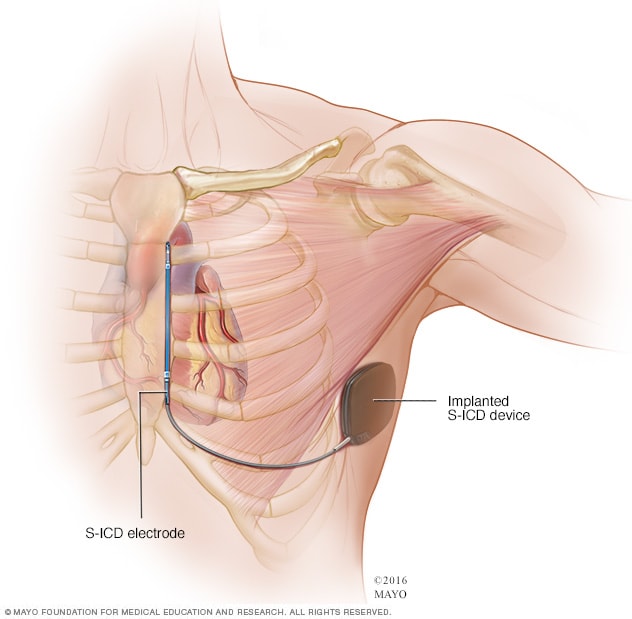 Implantable Cardioverter Defibrillators Icds Mayo Clinic
Implantable Cardioverter Defibrillators Icds Mayo Clinic
The purpose of this guide is to help you and your family prepare for this procedure and for your recovery at home.

Implantable cardioverter defibrillator surgery. An Implantable Cardioverter Defibrillator ICD is a life-saving device that helps to fix fast abnormal heart rhythms. This feature preserves the detection of arrhythmias but prevents any therapies from being delivered allowing safe use for surgery. It will improve over time- it is uncomfortable because it is quite a large device under the skin but your body will get use to it.
Answered on Oct 20 2012. Battery status lead parameters and arrhythmia log were recorded. It sends electrical pulses to regulate abnormal heart rhythms especially those that could be dangerous and cause a cardiac arrest.
Implantable cardioverter defibrillators were interrogated by specially trained and credentialed anesthesiologists or members of the electrophysiology service. The surgery takes about two hours and typically requires an. Studies have shown that implantable cardioverter-defibrillators are superior to antiarrhythmic drugs in the prevention of sudden death due to ventricular fibrillation 4 5.
662019 If the ventricles ie. An implantable cardioverter defibrillator is designed to monitor and treat heart rhythm problems greatly reducing the risks associated with them. Electrical wires are then threaded through a vein to the correct location in the heart and the other ends are attached to the generator.
262018 What is an implantable cardioverter defibrillator. Implantable cardioverter defibrillators manufactured by Medtronic USA and Boston Scientific USA can be programed to a monitor only mode. One lead will be placed in the atria and the second in the ventricle.
Studies have shown ICDs to have a role in preventing cardiac arrest in high-risk patients who havent had but are at risk for life-threatening ventricular arrhythmias. When it detects a very fast abnormal heart rhythm it delivers energy to the heart muscle. Implantable cardioverter-defibrillator registry risk score models for acute procedural complications or death after implantable cardioverter-defibrillator.
The lower chambers of a persons heart goes into an asymmetric rhythm and stops beating effectively cardiac arrest then an implantable cardioverter-defibrillator ICD which is a pager size device is placed in the persons. This causes the heart to beat in a normal rhythm again. 662015 34 years experience General Surgery.
Once the leads are placed in. If you are having a CRT device then the third lead will be placed to help the left ventricle. Antitachycardia therapy was programmed off for participants in the surgery above the umbilicus and cardiac surgery groups.
The defibrillator provides a shock to the heart if it were to go into a deadly arrhythmia. An implantable cardioverter defibrillator ICD is a small device that your doctor can put into your chest to. There are risks associated with this device including but not limited to allergic reactions bleeding death fever infection kidney failure need for surgical replacement nerve damage stroke.
Implantable cardioverter-defibrillators are designed to detect and terminate malignant ventricular arrhythmias. Implantable cardioverter defibrillator insertion is a procedure in which a chest implant is inserted to regulate the hearts electrical problems. Implantable cardioverter defibrillator An ICD is a small device which can treat people with dangerously abnormal heart rhythms.
The procedure To implant an ICD your doctor will pass one or two leads through a vein just under your collarbone and thread them into the heart. The heart has an electrical system that regulates the heartbeat. 652020 Haines DE Wang Y Curtis J.
An implantable cardioverter defibrillator ICD is an electronic device that constantly monitors your heart rhythm. The defibrillator and leads. An implantable cardioverter defibrillator ICD is commonly implanted in patients at risk for sudden cardiac arrest.
ICDs consist of two parts. The ICD sends electrical impulses to the heart to slow down the fast heart rhythm and return it to normal. Until then just tylenol acetaminophen and perhaps advil if you can tolerate it.
9292016 Implantable Cardioverter Defibrillator ICD ICDs are useful in preventing sudden death in patients with known sustained ventricular tachycardia or fibrillation.
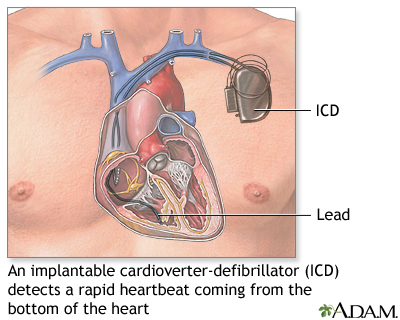 Implantable Cardioverter Defibrillator Medlineplus Medical Encyclopedia
Implantable Cardioverter Defibrillator Medlineplus Medical Encyclopedia
 Implantable Cardioverter Defibrillator Icd American Heart Association
Implantable Cardioverter Defibrillator Icd American Heart Association
Implantable Cardioverter Defibrillator Icd Washington Dc Maryland
 Implantable Cardioverter Defibrillators Nejm
Implantable Cardioverter Defibrillators Nejm
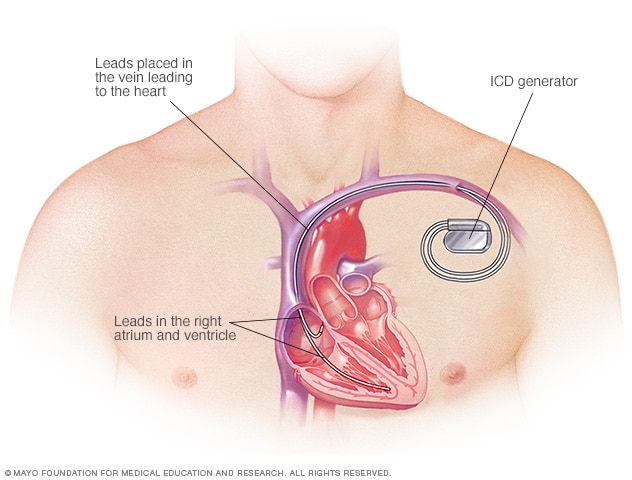 Implantable Cardioverter Defibrillators Icds Mayo Clinic
Implantable Cardioverter Defibrillators Icds Mayo Clinic
 Implantable Cardioverter Defibrillator Procedure Conditions Treatments Ucsf Benioff Children S Hospital
Implantable Cardioverter Defibrillator Procedure Conditions Treatments Ucsf Benioff Children S Hospital
 Implantable Cardioverter Defibrillator Icd Pacemaker Surgery Htw
Implantable Cardioverter Defibrillator Icd Pacemaker Surgery Htw
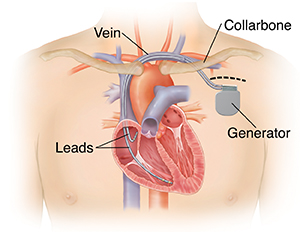
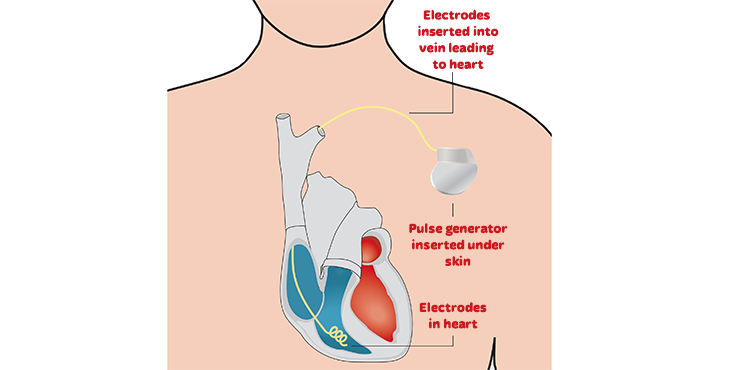 Implantable Cardioverter Defibrillator Icd Heart Foundation
Implantable Cardioverter Defibrillator Icd Heart Foundation
 Implantable Cardioverter Defibrillator Icd Women S Health
Implantable Cardioverter Defibrillator Icd Women S Health
What You Need To Know About An Implantable Cardioverter Defibrillator Central Georgia Heart Center
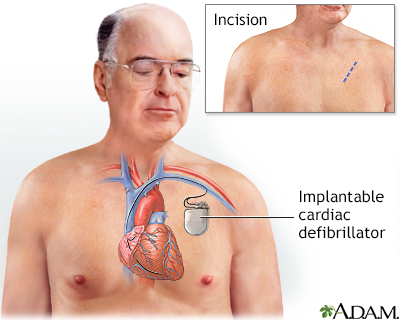 Implantable Cardioverter Defibrillator Discharge Information Mount Sinai New York
Implantable Cardioverter Defibrillator Discharge Information Mount Sinai New York
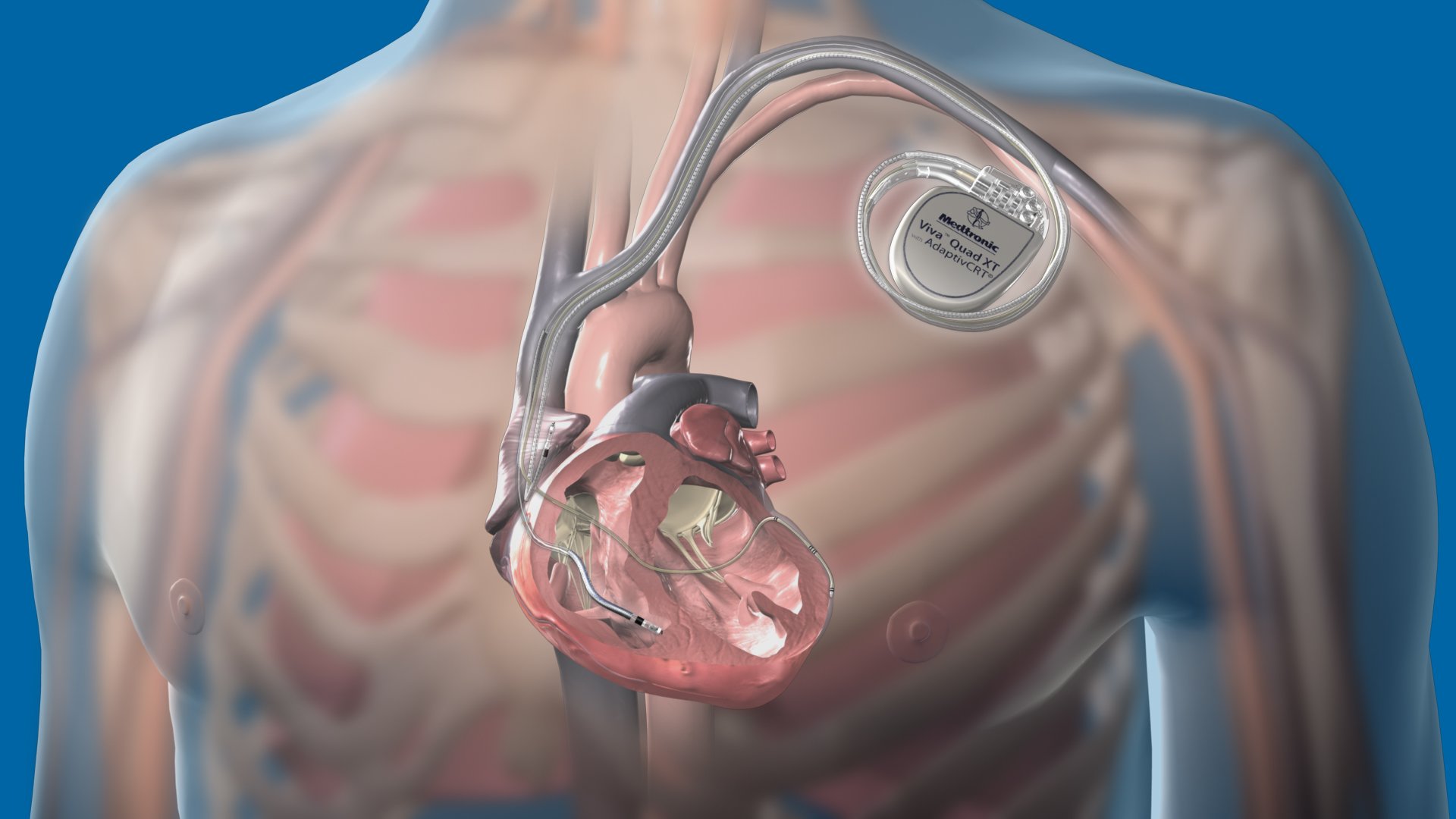 Advances In Implantable Cardioverter Defibrillator Technology Daic
Advances In Implantable Cardioverter Defibrillator Technology Daic
 Implantable Cardioverter Defibrillator Ottawa Heart Institute
Implantable Cardioverter Defibrillator Ottawa Heart Institute
Comments
Post a Comment